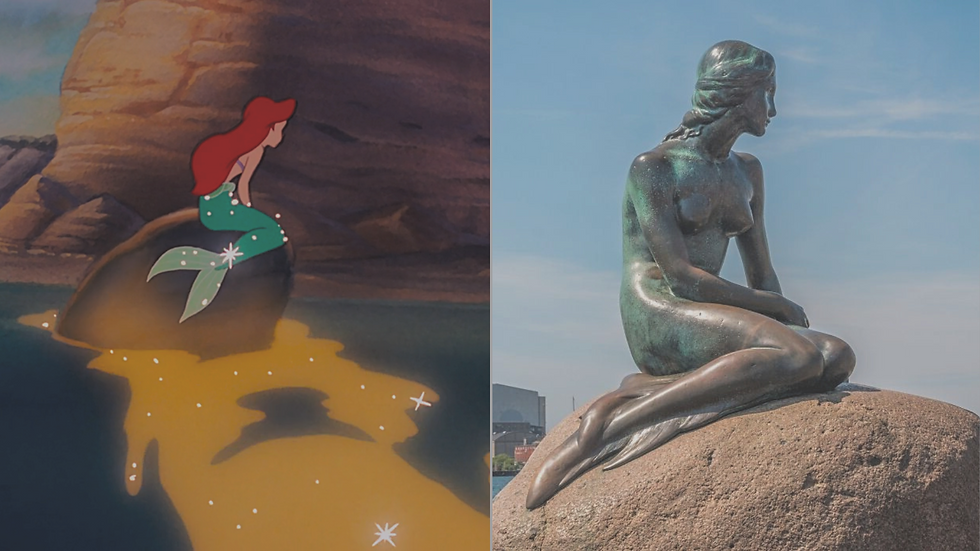The Little Mermaid (1989)
- Beatrice Paris
- Mar 4, 2023
- 3 min read
Updated: Apr 6, 2023
Film

Films released between 1989 and 1999 brought Walt Disney Animation Studios firmly back to the forefront of the film industry, which is why they are known as the Renaissance years. With The Little Mermaid, an adaptation of the story told by Hans Christian Andersen, Disney literally plunged into the most fruitful and popular period of its history, establishing the new canon of subsequent films: sung musical scenes, a young protagonist, the presence of a sentimental plot and animal friends/helpers of the protagonist. A film between past and future, old and new, establishing a return to princesses and opening up to the new with digital experiments: The Little Mermaid was in fact the last film in which the screen-printing technique was used and at the same time the first in which the CAPS digital image colouring and composition system, developed at the time for the studio by the newly-formed Pixar, was used. Needless to say, it was an unprecedented success, pulverising the numbers of Oliver & Company and all previous films.
Art

If in London we can find the statue of Peter Pan (placed in Kensington Gardens unannounced and in the middle of the night to give Londoners the impression that it had appeared by magic), in Copenhagen harbour we can instead admire that of Edvard Erikesen's famous Little Mermaid. The work was commissioned from the sculptor in 1909 by Carl Jacobsen, son of the founder of Carlsberg, who was fascinated by an adaptation of the fairy tale as a ballet. As inspiration, however, Eriksen used his wife Eline, making her immortal and placing her image at the entrance to Copenhagen harbour on 23 August 1913. Within a very short time it became the symbol of the city, even though today there are at least 13 copies of the Little Mermaid: in California, New Zealand, Thailand and also in Italy, one on the island of Ischia and two in Sicily, the first on the Giardini Naxos seafront and the second in the Plemmirio marine protected area. Ariel mentions her several times in the film, assuming the same melancholic position on the rock, but turned towards dry land, dreaming of being part of that world inaccessible to her. She did not want to believe that the world of humans was a disaster, despite Sebastian's constant warnings. She continued to dream of it by collecting dinglehopper, snarfblatt and other relics of the human world lost in the depths of the sea.

Among these relics, one very special one stands out: it is George de La Tour's painting, Penitent Magdalene (1640). The French artist was very successful among his contemporaries with his paintings of stark contrasts, realistic themes that show us an unfiltered existence, with faces marked by poverty and the inexorable passing of time. Figures such as that of the silent Magdalene, absorbed in her thoughts as she gazes at a candle, the only source of light that dramatically illuminates her according to Caravaggio's lessons. The artist also produced another painting with the same subject, portraying Magdalene when she has already repented, but the one Disney chose to show Ariel is instead her reflection. In doing so, it creates a subtle parallelism between Magdalene, who meditates on the debaucheries of her past life with the intention of changing her future life forever, and Ariel who in her secret room dreams of a different future for herself. A parallelism and at the same time a contrast, between what has been and what will be, like that of the fire of a candle that continues to burn at the bottom of the sea.
External Links
Watch The Little Mermaid on Disney +
The statue:
The Little Mermaid Statue (1913), by Edvard Eriksen
visitable at the harbour in Copenhagen, Denmark.
The painting:



Comments